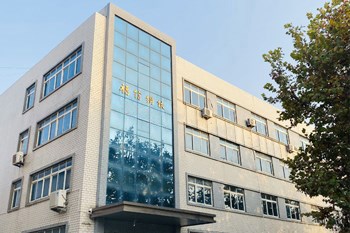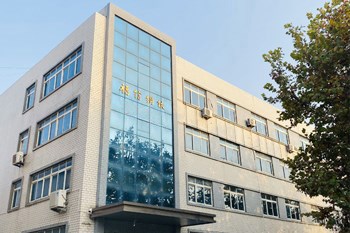
-
走进福信
- 新闻中心
新闻中心福信钢铁是热轧H型钢经销加工配送大型物流企业,是马钢H型钢山东地区代理商,是莱钢H型钢经销商,是日钢经销商,是鞍山宝得钢厂经销商,福信人经过二十年的艰苦奋斗和辛勤耕耘 ,用户遍布石化、化工、炼油、钢铁、船舶制造等领域。
- 产品展示
- 人力资源
- 在线留言
在线留言- 联系我们
- Home
Home- About Us
About UsFuxin Iron and Steel Co., Ltd. was established in 1993. The head office is located in the scenic coastal city of Yantai Development Zone.
- News
NewsAfter 20 years of hard work and hard work, Fuxin Steel has customers in petrochemical, chemical, oil refining, steel, shipbuilding and other fields.
- Products
ProductsThe company has become a qualified supplier in the e-commerce network of Sinopec and PetroChina, a quality credit AAA enterprise, and has passed the quality management system certification required by the ISO9000 standard.
- Jobs
- Messages
Messages- Contact us
Contact usAnalysis of steel price trends in the second quarter of 2015Release time:2015-03-05 21:54|Reading volume:This week is the second week after the Spring Festival. Since most of the infrastructure industry has not yet started, the spot market is still weak. However, the fundamentals of the steel market are improving, and policy benefits have frequently emerged. We expect steel prices to rebound in the second quarter under the influence of factors such as "low inventory, picking up consumption, and strict environmental protection laws."
The operating rate of the blast furnace decreased. During the Spring Festival every year, because steel mills start work as usual and steel construction sites are stopped, the mismatch between supply and demand has led to a sharp increase in steel inventory after the Spring Festival. During the Spring Festival in 2015, steel stocks also increased significantly, but the increase in stocks was only 10.12%, much smaller than the 30% increase in previous years. The main reason is that steel mills passively reduced the operating rate of the blast furnace under the double pressure of production losses and tight funds. In the past month or so, steel mills’ losses have continued to increase, and the proportion of loss-making steel mills has continued to rise to 75%. At the same time, the blast furnace operating rate of steel mills has also dropped to 86%.
The characteristics of the bottom of the market are obvious, and steel prices tend to rise but never fall. After more than two consecutive years of decline, the steel market is now basically at the bottom. The judgment at the bottom has the following indicators: 1. The steel mill's tolerance to losses is decreasing. In the past, steel mills could sustain a loss for 3 months before reducing production. This time the steel mills maintained a loss for only more than one month, resulting in a significant drop in the operating rate of the blast furnace. From 91.16% in early January to 86.74% in mid-February; 2. A large number of mergers and reorganizations in the entire industry are characteristic of the bottom of the industry. On February 25, the leader of the steel industry "Shagang" transferred 55.12% of its shares in a listed company. On the same day, Sinosteel Tianyuan also disclosed that it would plan for major issues involving the company and suspend trading. According to reports, it may be actually controlled by the company. China Steel Group plans to inject assets into listed companies. 3. Negative factors are concentrated and fully understood by the market. The massive increase in the supply of iron ore, the weakness of China's real estate market, and the tightness of funds in the steel industry have concentrated on suppressing steel prices. For the steel market, the worst has occurred, but the market has been ignoring the possible good changes (for example, the European economic recovery caused by quantitative easing in Europe is stronger than expected, China’s easing policy is stronger than expected, China's new environmental protection law may cause a sharp drop in the supply of the steel market, etc.). That is to say, the probability of the factors affecting the rise of steel prices in the future is higher than the probability of the factors affecting the decline of steel prices.
Interest rate cut and environmental protection have become a booster for steel prices. On March 1, the central bank [Weibo] announced that it would cut the benchmark deposit and loan interest rate by 0.25 percentage points. Although it seems a bit late, it is undoubtedly a positive for the steel market. First of all, interest rate cuts are like blood transfusions for many real estate companies, and interest rate cuts can increase steel demand; secondly, interest rate cuts are a quick relief to iron and steel companies that lack funds. Steel companies with reduced capital pressure do not have to sell their goods for cash and cut interest rates. Can reduce the pressure of market supply.
At the same time, we saw that the supervision and enforcement of the Environmental Protection Law was pushed to the forefront. Just after the Spring Festival, the iron ore project of Maanshan Iron and Steel Co., Ltd. hit an environmental protection muzzle and was stopped. The Ministry of Environmental Protection requires that environmental protection departments at all levels should effectively increase the investigation and punishment of environmental violations of construction projects, and the coking and steel industries, as the worst-hit areas for environmental protection, are facing a new round of tests. According to estimates by authoritative sources, only the member companies of the China Iron and Steel Association need to invest 50 to 70 billion yuan to meet the new environmental protection standards. Large state-owned enterprises used to invest heavily, while private enterprises used to rely on this to save costs. Now they have to reinstall equipment. Many enterprises have invested several billion yuan in environmental protection. In the current sluggish steel industry, such a large amount of funds Especially for private enterprises, the pressure is huge. Environmental protection will undoubtedly raise the cost of steel, and even worse, it will effectively reduce the supply of steel.
In summary, steel prices are likely to rebound in the second quarter, and the continuous widening of the spread between the far and near contracts of rebar futures is a manifestation of the market's expectations. (China Investment Consulting Network)
PreviousNext
- Add:90 Huangshan Road, Yantai Development Zone
- Tel:0535-6370829
- Fax:0535-6396529

Follow mobile station
COPYRIGHT 2020 Yantai Fuxin Steel Co., Ltd. All rights reserved - 新闻中心












